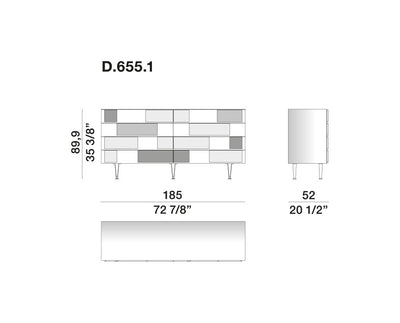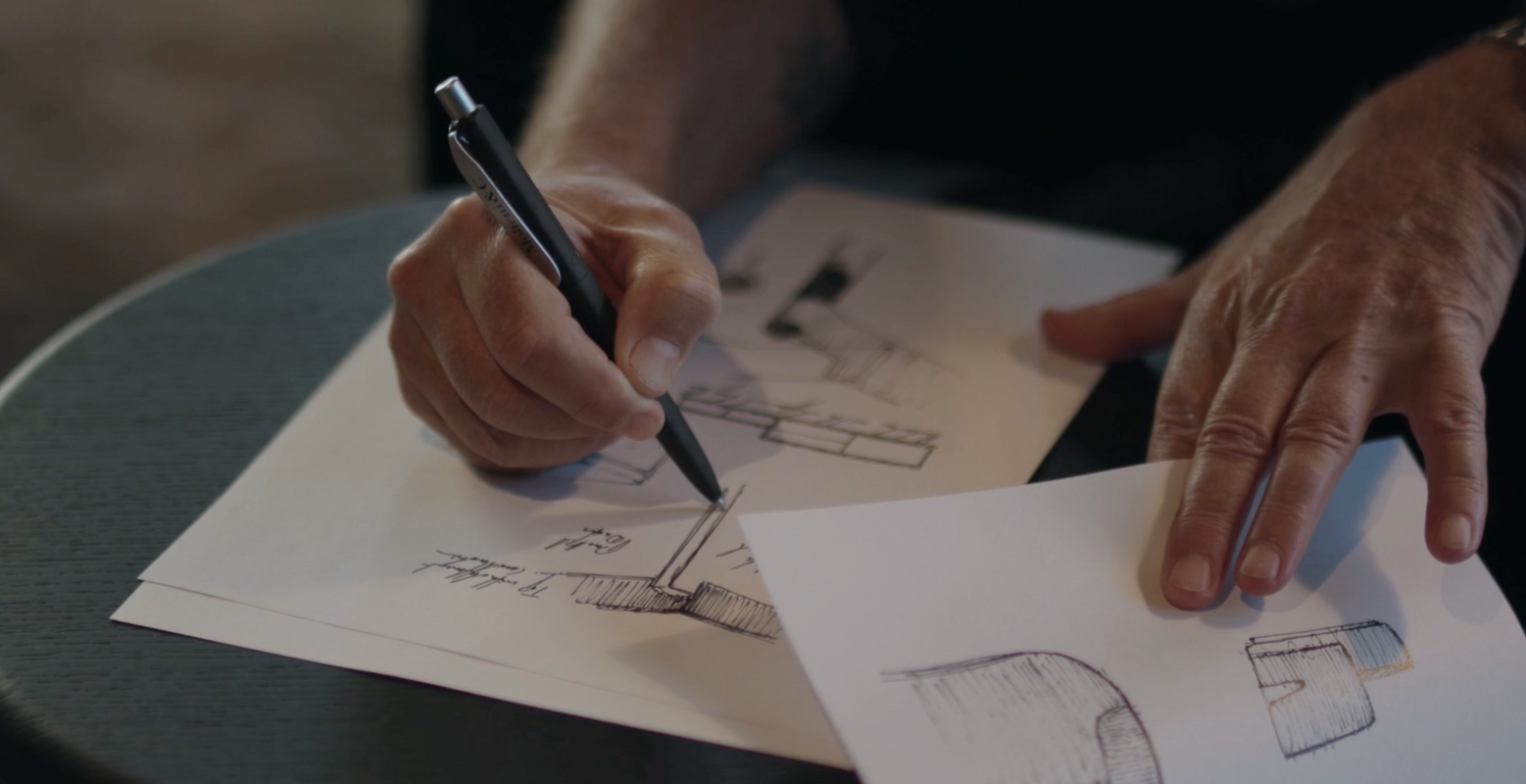
Giovanni “Gio” Ponti, (Milan, November 18, 1891 - Milan, September 16, 1979), is one of the Italian masters of architecture. He was also a designer and essayist and one of the most important of the twentieth century.
Other than the great architectural works which carry his unmistakable signature, he created a vast amount of work in the furniture sector. This is demonstrated in his three Milanese houses which were fully furnished in the "Ponti" style. The houses in via Randaccio, 1925, Casa Laporte in via Brin, 1926 and the last in via Dezza, in 1957 is an "expression" of his home design ideas. Gio Ponti was an Italian promoter of industrial design and introduced the idea of interior furnishing ranges produced as being a "sophisticated," economic, "democratic" and modern.
Molteni&C managed a reissuing project of furniture and furnishings designed by Gio Ponti for products for these private homes and limited editions. After a long journey of research, selection and study of prototypes, the collection was exhibited at the Salone del Mobile 2012. This was thanks to the cooperation and the exclusively signed agreement of the Ponti heirs and the artistic director of Cerri & Associati Studio.


This is a Made-to-Order item, available in 18 weeks.

Giovanni “Gio” Ponti, (Milan, November 18, 1891 - Milan, September 16, 1979), is one of the Italian masters of architecture. He was also a designer and essayist and one of the most important of the twentieth century.
Other than the great architectural works which carry his unmistakable signature, he created a vast amount of work in the furniture sector. This is demonstrated in his three Milanese houses which were fully furnished in the "Ponti" style. The houses in via Randaccio, 1925, Casa Laporte in via Brin, 1926 and the last in via Dezza, in 1957 is an "expression" of his home design ideas. Gio Ponti was an Italian promoter of industrial design and introduced the idea of interior furnishing ranges produced as being a "sophisticated," economic, "democratic" and modern.
Molteni&C managed a reissuing project of furniture and furnishings designed by Gio Ponti for products for these private homes and limited editions. After a long journey of research, selection and study of prototypes, the collection was exhibited at the Salone del Mobile 2012. This was thanks to the cooperation and the exclusively signed agreement of the Ponti heirs and the artistic director of Cerri & Associati Studio.

D.655.1 | Chest of Drawers
Marked by hand-painted white drawer fronts with applied handles in various wood kinds (elm, Italian walnut, mahogany and rosewood).

Chest of drawers designed in several versions in the period from 1952 to 1955. The new version was produced using original drawings kept in the Gio Ponti Archives and the art direction for the Gio Ponti Collection came from Studio Cerri & Associati.The elmwood frame rests on satin brass feet.
Recently viewed

COMPLIMENTARY CONSULTATION

CUSTOM CONFIGURATION
MADE IN ITALY














